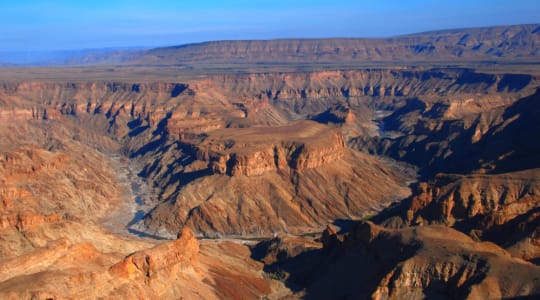The Fish River Canyon is a geological wonder located in Namibia, southern Africa. The canyon, which is around 160 kilometers long and up to 27 kilometers wide, was created by the erosive force of the Fish River over a period of hundreds of thousands of years. The walls of the canyon are up to 550 meters high in some places, and they provide a unique habitat for various species of plants and animals that are adapted to the harsh environment.
The Fish River Canyon is a popular tourist destination, and many visitors come to hike along the rim of the canyon or to drive through the surrounding landscape. The most popular time to visit is during the dry season, from April to October, when the temperatures are cooler and the water level in the river is at its lowest.
The Fish River Canyon is also an important site for geologists and historians, as it provides valuable insights into the geological history of southern Africa and the formation of the continent's landscapes. The rock formations and other geological features in the canyon have been dated to more than 500 million years old, and they provide evidence of ancient geological processes that have shaped the region over time.
Cross-Border Adventures Near Fish River Canyon
Discover cross-border adventures near Fish River Canyon. Explore neighboring countries with similar attractions and extend your travel experience across borders.







